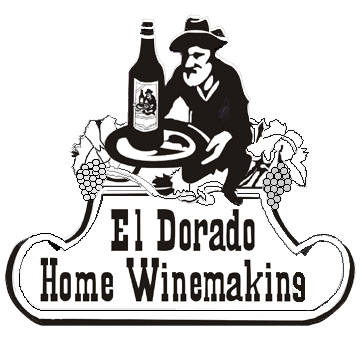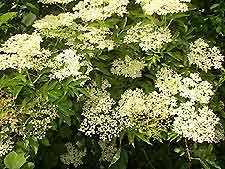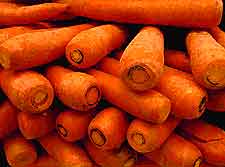This website is not associated with any club, group or association. It is a private website providing information for the home wine maker.
El Dorado Home Wine Making Website - Home Wine Making Information and Wine Recipes

Wine Wallpaper
Donate and Help Out
If you have found this website to be helpful, maybe you might want to donate a couple dollars to show your appreciation.
Fruit Wine
MAIZE WINE
Ingredients:
1 1⁄2 lb. crushed maize
3 1⁄2 lb. Demerara sugar
4 sweet oranges
1 gallon water
1 lb. raisins
1 lemon
Yeast; yeast nutrient
Method:
Despite the amount of sugar, this will make a medium wine, and there are many
similar recipes which advocate up to as much as even 4 1⁄2 lb. sugar, so if you prefer a
sweet wine you can well exceed the normal 3 1⁄2 lb. limit in this case. It is a help to soak
the maize overnight in some of the water to soften it, and then, when you come to make
your wine, run it through a coarse mincer, together with the raisins. Peel the lemon and
oranges, being careful to miss the white pith, and put the rinds into a crock with the sugar,
maize, raisins, and the juice of the fruits. Pour over the ingredients the water, which need
be only hot (not boiling) add one crushed Campden tablet, and stir well to dissolve it and
the sugar. Allow the liquor to cool to 70 degrees F., then add the yeast and yeast nutrient
and keep the crock in a warm place, closely covered, for 10 days, stirring well each day.
Then strain into fermenting jar or bottle and fit fermentation trap.
PRUNE WINE
Ingredients:
2 lbs. prunes
1⁄2 lb. raisins
3 1⁄2 lb. sugar
1 gallon water
Yeast; yeast nutrient
1 Campden tablet
Method:
Put the prunes in a crock and cover them with the water, mashing and stirring
them daily for 10 days. Then strain, and either press the pulp or squeeze it by hand to
extract as much juice and flavour as possible. Add the sugar, chopped raisins, and a
crushed Campden tablet, and stir to dissolve. Then add the yeast and yeast nutrient and
leave to ferment in a warm place, as usual, for 10 days. Keep the crock closely covered
and stir daily. Then strain into fermenting jar and fit trap, and move into slightly cooler
place (about 65 degrees). After another two months the secondary ferment should be
finished and when the wine clears it should be racked off into clean bottles.
RAISIN WINE
Ingredients:
8 lbs. large raisins
1 gallon water
Yeast; yeast nutrient
1 Campden tablet
Method:
Clean the raisins thoroughly by washing them in a colander, then mince through a
coarse mincer. Put them into a fermentation jar with a wide neck, pour on the cold water,
and add one crushed Campden tablet. Keep the jar covered. Two days later add the yeast
and yeast nutrient, and fit a fermentation trap to the jar. Alternatively cover the wide neck
with a sheet of polythene secured by a rubber band, which will serve the same purpose.
Keep the fermentation jar in a warm place (about 70 degrees F.) for a few days, and
afterwards in a temperature of about 65 degrees F. until the ferment has finished. Each
day give the vessel a good shake. When fermentation has finished strain the liquor off the
raisins, which can then easily be removed (hence the need for a wide-necked jar, with a
narrow-necked one it can be a fiddly business). Put into a fresh jar and leave for a further
three months before racking (siphoning the wine off the lees) again and bottling.
By using some sugar one can reduce the amount of raisins required, although the
wine will have nothing like the same body. Here is a recipe, however, using this method:
Raisin Wine (2)
GOOSEBERRY CHAMPAGNE
6 lb / 2,750 grams unripe green gooseberries
3 lb / 1,500 grams sugar
8 pints / 1 gallon water
1/4 oz / 10 grams Champagne yeast
METHOD
After a 24-hour period, add the sugar and stir until it has completely dissolved. Add the remaining water (cold) and leave for a further day. Strain through muslin and return the mixture to the fermentation bucket, adding the Champagne yeast. After three days, siphon the gooseberry liqour into a demijohn and leave untouched for up to six months. Siphon into a clear jar and leave until the spring. Bottle into strong glass bottles, using wire ties to stop the corks exploding. If possible, leave for a minimum of three months, preferably longer, by which time it should be well and truly sparkling.
NECTARINE WINE
3 1/2 lb / 1,350 grams nectarines
3 lb / 1,350 grams sugar
3 lemons
1/2 pint strong black tea
Pectin enzyme
Water up to 1 gallon
Yeast nutrient
Wine yeast
METHOD - WHAT TO DO
Stone the nectarines and place in a fermentation bucket, together with the sugar. Pour over the boiling water and stir well to dissolve the sugar and break down the fruit. When cool add the lemon juice, strong tea, pectin enzyme and yeast nutrient. Add the wine yeast and cover and leave for six days. Strain with a fine sieve and put into a demijohn and fit an airlock to seal the jar.
Store in a warm place and allow the fermentation to work. When fermentation has ceased, rack the wine into a clean jar and place in a cooler environment and leave. When the wine is clear and stable siphon into bottles.
ELDERFLOWER AND CARROT WINE
 1/2 pint elderflowers
1/2 pint elderflowers
3 lb / 1,350 grams carrots
1 lb / 450 grams sultanas
Citric acid
1/2 pint strong black tea
3 lb / 1,350 grams sugar
Water up to 1 gallon
Yeast nutrient
Wine yeast
METHOD - WHAT TO DO
Scrub, thinly slice the carrots and boil until just tender. Place the elderflowers, chopped sultanas and sugar into a fermentation bucket. Strain over this the boiling carrot liquid. Stir vigorously to dissolve the sugar. When cool add the strong tea, citric acid, yeast nutrient and wine yeast. Cover and leave to ferment for seven days, stirring daily. Strain into a demijohn and fit an airlock to seal the jar.
Strain over this the boiling carrot liquid. Stir vigorously to dissolve the sugar. When cool add the strong tea, citric acid, yeast nutrient and wine yeast. Cover and leave to ferment for seven days, stirring daily. Strain into a demijohn and fit an airlock to seal the jar.
Store in a warm place and allow the fermentation to work. When fermentation has ceased, rack the wine into a clean jar and place in a cooler environment and leave. When the wine is clear and stable siphon into bottles.
